When it comes to supination and running, the right gear can completely change how comfortable and efficient your miles feel. Many runners don’t realize how much an outward-rolling foot can influence their mechanics, until the aches start showing up. Supination may seem like a small detail, but it plays a big role in how your body absorbs impact and distributes stress.
If this outward roll isn’t managed properly, it can lead to discomfort or even injury over time. That’s why recognizing the signs early is so important. Your shoes, especially, can either help correct your alignment or quietly make things worse. Knowing what to look for can save you from unnecessary strain and improve how your entire stride feels.
In this post, we’ll break down the key indicators that it might be time to rethink your footwear. By understanding how foot alignment affects your running, you’ll be better equipped to choose shoes that support your mechanics, boost your efficiency, and make every run more enjoyable. Let’s dig into how the right pair can truly transform your running experience.
Table of Contents
- Signs of Supination
- The Impact of Supination on Your Running
- Choosing the Right Shoes for Supination

Understanding Supination
Supination is the movement of the foot that occurs when the weight is borne on the outer edge of the foot, causing the arch to raise. This can lead to an outward rolling of the ankle and an increased curvature of the foot. Supination is often associated with a high-arched foot and can impact running and walking mechanics, potentially leading to injuries if not managed properly.
Why Supination Matters for Runners
Understanding the impact of supination on your running is essential for preventing injuries and optimizing performance. Supination, or underpronation, occurs when the foot rolls outward during the running stride. This gait issue can lead to various problems for runners, including:
- Increased risk of injuries: Supination can cause strain on the ankles, knees, and hips, leading to injuries such as sprains, IT band syndrome, and shin splints.
- Poor shock absorption: Runners with supination often experience less effective shock absorption, putting additional stress on joints and muscles.
- Imbalance in muscle usage: Supinators may overuse certain muscle groups while underutilizing others, leading to muscle imbalances and potential overuse injuries.
- Inefficient running form: Supination can compromise running efficiency, resulting in decreased speed and endurance over time.
- Footwear challenges: Finding suitable footwear can be difficult for supinators, as most running shoes are designed for neutral or overpronated feet, potentially exacerbating issues.
Addressing supination through proper gait analysis, targeted strength training, and appropriate footwear can help mitigate these effects and improve running performance.
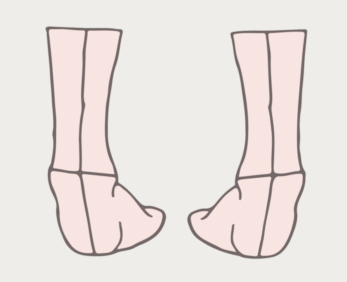
Signs of Supination
Footwear Wear Patterns
Signs of supination in footwear wear patterns include:
- Outsole Wear: Excessive wear on the outer edge of the outsole, particularly near the heel and along the lateral side.
- Toe Box Wear: Increased wear on the outer portion of the toe box, indicating that the foot rolls outward during the push-off phase.
- Heel Wear: A noticeable wear pattern that is concentrated on the outer heel area, indicating that the heel strikes the ground on the outside.
- Lateral Edge Compression: Softer material on the lateral edge of the shoe may compress more easily, showing signs of wear before the medial side.
- Uneven Traction: Reduced traction or grip primarily on the outer edges of the shoes, leading to slips or loss of stability during lateral movements.
These indicators can help identify supination and guide appropriate footwear choices.
Physical Symptoms During or After Running
Supination, also known as underpronation, occurs when the foot rolls outward during running. Common physical symptoms include:
- Foot and Ankle Pain: Discomfort on the outer side of the foot and ankle.
- Shin Splints: Pain along the shin due to uneven weight distribution.
- Knee Pain: Discomfort on the outer knee, potentially leading to conditions like IT band syndrome.
- Hip Pain: Discomfort in the hip joint due to altered biomechanics.
- Stress Fractures: Increased risk of stress fractures, particularly in the fifth metatarsal or lateral bones of the foot.
- Reduced Shock Absorption: Less effective cushioning can lead to overall fatigue and soreness in the legs and feet.
- Calluses and Blisters: Increased friction on the outer edges of the foot may lead to calluses or blisters.
Recognizing these symptoms can help in adjusting running technique or footwear to alleviate discomfort.
Injury Risks Associated with Supination
Supination, or the outward rolling of the foot during walking or running, can lead to several injury risks, including:
- Ankle Sprains: The instability created by excessive supination can increase the likelihood of rolling the ankle, leading to sprains.
- Lateral Knee Pain: The misalignment of the foot can cause strain on the knee, resulting in pain on the outer side.
- Plantar Fasciitis: The altered foot mechanics can lead to excessive stress on the plantar fascia, resulting in inflammation and pain.
- Achilles Tendonitis Supination may place additional stress on the Achilles tendon, leading to irritation and inflammation.
- Stress Fractures: Increased pressure on certain areas of the foot can result in stress fractures, particularly in the metatarsals.
- IT Band Syndrome: The improper alignment and mechanics can contribute to irritation of the iliotibial band, causing pain along the outer thigh and knee.
To mitigate these risks, consider orthotic support, proper footwear, and strengthening exercises.
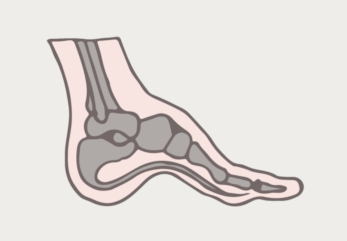
The Impact of Supination and Running
Biomechanical Effects
Supination in running refers to the outward rolling of the foot during movement. This biomechanical effect can lead to several consequences:
- Foot Mechanics: During supination, the weight shifts towards the outside of the foot, which can affect the distribution of forces throughout the foot and leg.
- Shock Absorption: Supinators may experience less effective shock absorption, as the arch and lateral structures of the foot may not adequately compress to absorb impact.
- Knee Alignment: Supination can result in knee alignment issues, often causing the knees to bow outward, which may lead to increased strain on the knee joints.
- Ankle Stability: The outward roll can compromise ankle stability, increasing the risk of sprains or injuries, particularly in uneven terrain.
- Injury Risk: Runners who supinate may be more prone to specific injuries such as ankle sprains, IT band syndrome, and plantar fasciitis due to altered biomechanics.
- Footwear Considerations: Proper footwear is crucial for supinators, as shoes with adequate cushioning and support can help mitigate adverse effects and promote better alignment.
- Gait Adjustments: Supinators may need to adjust their running gait to compensate for imbalances, which can lead to inefficient running mechanics and increased fatigue over time.
Adjusting for supination through strength training, proper footwear, and running form can enhance performance and reduce injury risk.
Performance Considerations
Supination, or underpronation, occurs when the foot rolls outward during the running stride. This can lead to less effective shock absorption and increased pressure on the outer edges of the feet. Runners who supinate may experience issues such as ankle instability and a higher risk of injuries, including plantar fasciitis and stress fractures.
Proper footwear designed for supination can help improve performance and reduce injury risk by providing adequate cushioning and support. Adjusting running form and incorporating strengthening exercises for the feet and ankles can also mitigate the effects of supination.
Choosing the Right Shoes for Supination
Key Features to Look For
Key Features of the right running shoes for supination:
- Cushioning: Look for shoes with ample cushioning to absorb shock and provide comfort during runs. This helps reduce impact on the outer side of the foot.
- Arch Support: Choose shoes that offer adequate arch support to help stabilize the foot and prevent excessive rolling outward.
- Flexibility: Select a shoe with a flexible sole that allows natural foot movement while providing stability.
- Heel Counter: A firm heel counter can help maintain foot alignment and control excessive supination.
- Lightweight Design: Opt for lightweight materials to enhance speed and reduce fatigue during longer runs.
- Durability: Ensure the shoe is made from high-quality materials to withstand wear and tear, especially on the outer edges.
- Wide Toe Box: A spacious toe box allows for proper toe splay and comfort, preventing cramping and discomfort.
- Traction: Look for shoes with a good outsole grip to provide stability on various surfaces, especially if running on trails or uneven terrain.
Supination and Running: Recommended Shoe Brands and Models
Here’s a list of the best shoes for runners with supination (in no particular order):
Nike Invincible 3
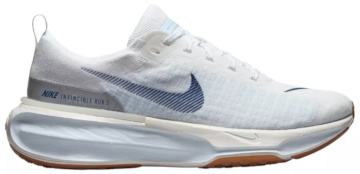
The Nike Invincible 3 is built for runners who need plush cushioning with good energy return, making it a strong option for those who supinate. With a wider toe box and Nike’s famously soft ZoomX foam, it delivers a stable, supportive platform without feeling bulky. The midsole absorbs impact exceptionally well, great for runners whose feet tend to roll outward, and still gives you that energetic rebound that keeps the shoe feeling lively on longer runs.
Despite all that cushioning, the Invincible 3 feels surprisingly lightweight, which helps promote a more natural gait and reduces extra strain on the foot and ankle. The outsole’s traction pattern adds another layer of confidence, giving you solid grip on varied surfaces and helping prevent slips when fatigue sets in. Overall, it’s a comfortable, springy ride tailor-made for runners who want support without sacrificing fun.
SHOP AT DICK’SNike Pegasus 41

The Nike Pegasus 41 packs in the kind of features that make life a lot easier for runners who supinate. As Nike’s flagship daily trainer, it continues to improve with every generation, and this version leans into a smoother, more supportive ride. The ReactX cushioning delivers impressive shock absorption, taking pressure off the outer edge of the foot, while the midsole’s inherent stability helps guide you into better alignment. It’s the kind of setup that feels protective without ever feeling stiff.
Even with all that structure, the Peg 41 stays light on its feet, allowing your stride to stay natural and fluid. The flexible outsole adds a reassuring level of traction and stability, giving you confidence on everything from easy miles to longer workouts. All together, these elements work quietly in the background to help reduce excessive supination, so your runs feel balanced, comfortable, and consistently reliable.
SHOP AT NIKEASICS Gel-Nimbus 27
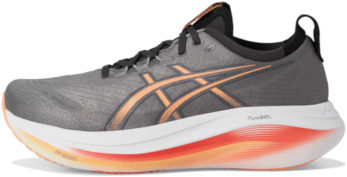
The ASICS Gel-Nimbus 27 brings together the kind of cushioning and subtle stability that make it a strong match for runners who supinate. As ASICS’ most cushioned neutral daily trainer, it delivers that signature plush feel while quietly helping guide the foot into a more natural alignment. The FF BLAST PLUS ECO foam and the brand’s classic Gel cushioning work together to soften impact and take pressure off the outer edge of the foot, an area that supinators often overload. The result is a ride that feels protective, balanced, and surprisingly lively for a max-cushion shoe.
Transitions stay smooth thanks to lightweight FlyteFoam components, and the structured upper helps keep the foot centered without ever feeling restrictive. It wraps securely through the midfoot and heel, limiting unwanted lateral movement that can contribute to supination-related discomfort. If you want a dependable daily trainer that combines comfort, alignment, and long-distance cushioning, the Nimbus 27 checks all the boxes.
SHOP AT ZAPPOSHoka Clifton 10
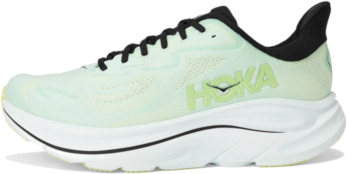
The Hoka Clifton 10 delivers the kind of soft, stable ride that makes a real difference for runners who supinate. As Hoka’s go-to daily trainer, it pairs a generously cushioned midsole with a wider platform that helps disperse impact and take pressure off the outer edges of the foot. The rocker design feels smooth and effortless at toe-off, giving you that signature Hoka roll that keeps transitions light and easy. Add in the breathable upper and lightweight build, and you get a shoe that stays comfortable from warmup to cooldown.
What makes the Clifton 10 especially friendly for supinators is how naturally it guides the foot through each step. The combination of plush cushioning, balanced stability, and gentle rocker geometry promotes a more neutral stride without forcing anything unnatural. If you’re looking for a daily trainer that supports better alignment while still feeling soft, smooth, and easy to wear, the Clifton 10 checks all the right boxes.
SHOP AT ZAPPOSNew Balance Fresh Foam X 1080v14
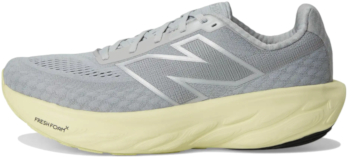
The New Balance Fresh Foam X 1080v14 brings together plush cushioning and subtle stability, making it a strong match for runners who supinate. As New Balance’s top-tier daily trainer, it uses a generous slab of Fresh Foam X to soften impact and take pressure off the outer edge of the foot. The midsole feels smooth and protective without losing that lively, responsive bounce runners love. The wide toe box also lets your foot splay naturally, helping improve balance and overall comfort on longer runs.
Up top, the engineered mesh upper wraps the foot securely while keeping things breathable and irritation-free. Underneath, well-placed outsole rubber adds reliable traction and grip, giving you confidence whether you’re cruising easy miles or pushing the pace. If you’re seeking a cushioned, stable ride that gently corrects supination without feeling restrictive, the 1080v14 delivers a well-rounded experience.
SHOP AT ZAPPOSFinal Thoughts on Supination and Running
In conclusion, recognizing the effects of supination on your running is crucial for optimizing your performance and preventing injuries. By paying attention to the signs that indicate a need for the right footwear, you can enhance your comfort and support during each run.
Selecting shoes that cater to your specific gait can make a significant difference in your overall experience, allowing you to enjoy the sport you love with greater ease and confidence. Don’t overlook the importance of proper footwear; invest in the right shoes to unlock your full potential as a runner.
(This content was created with the help of AI.)
You may also like:
